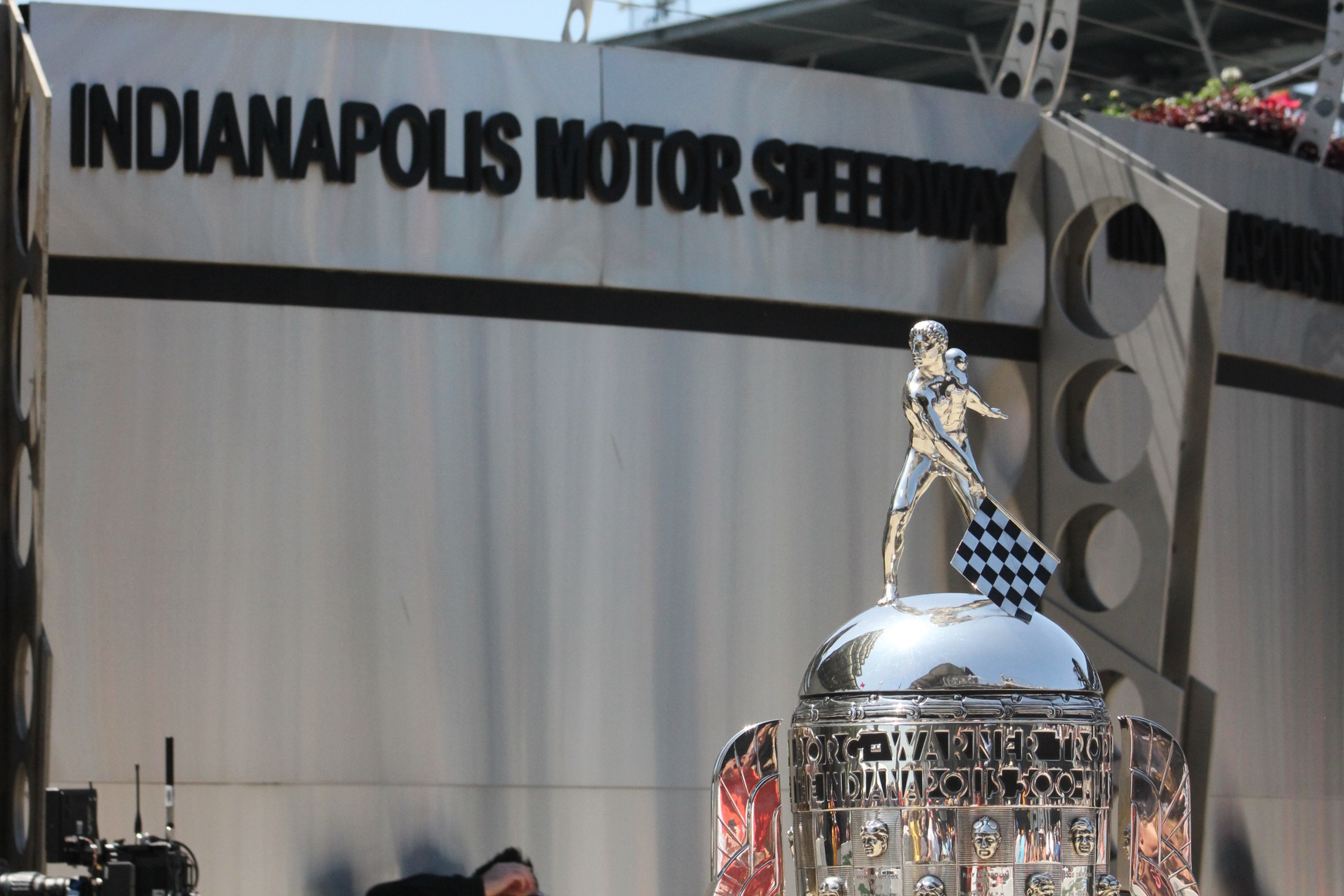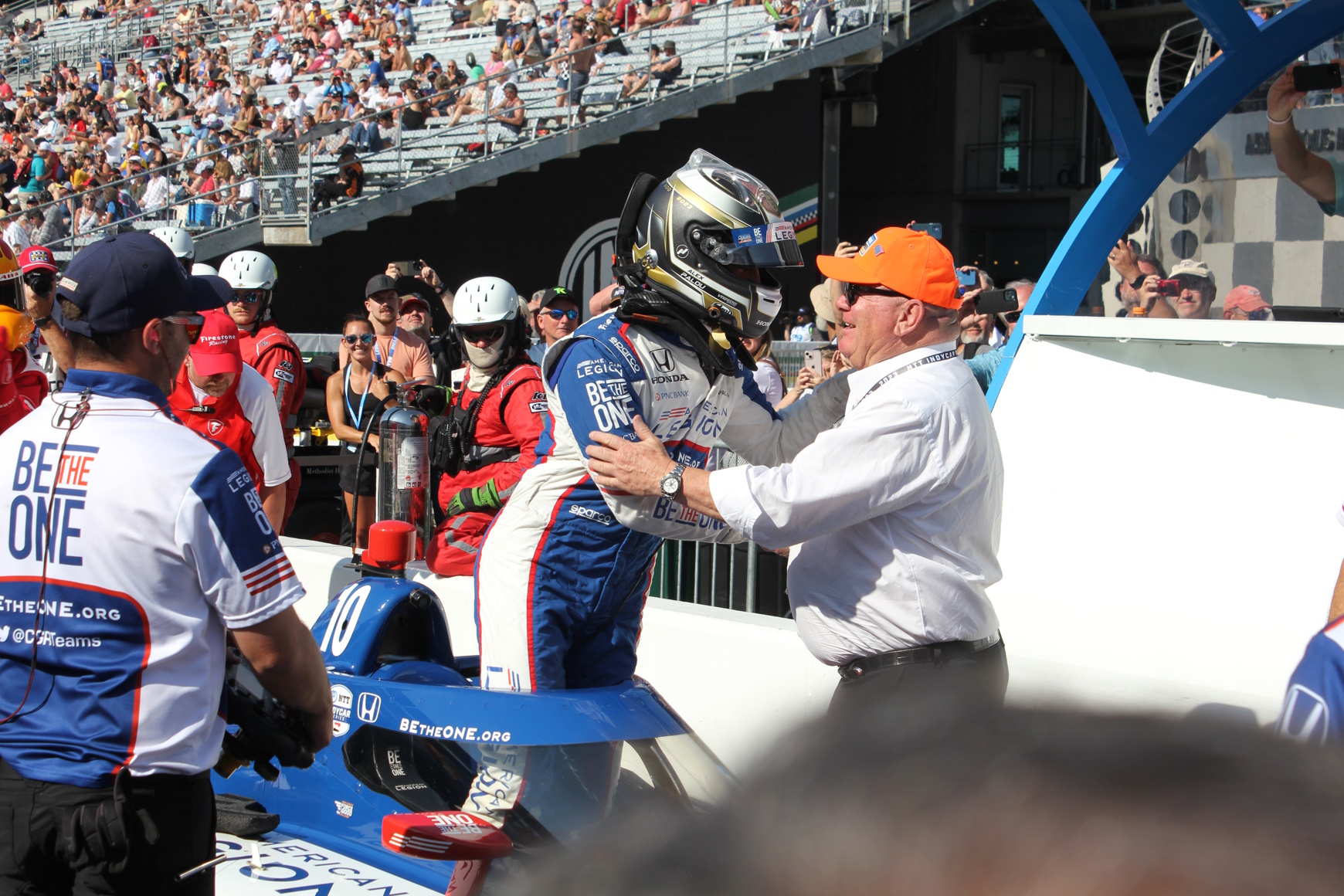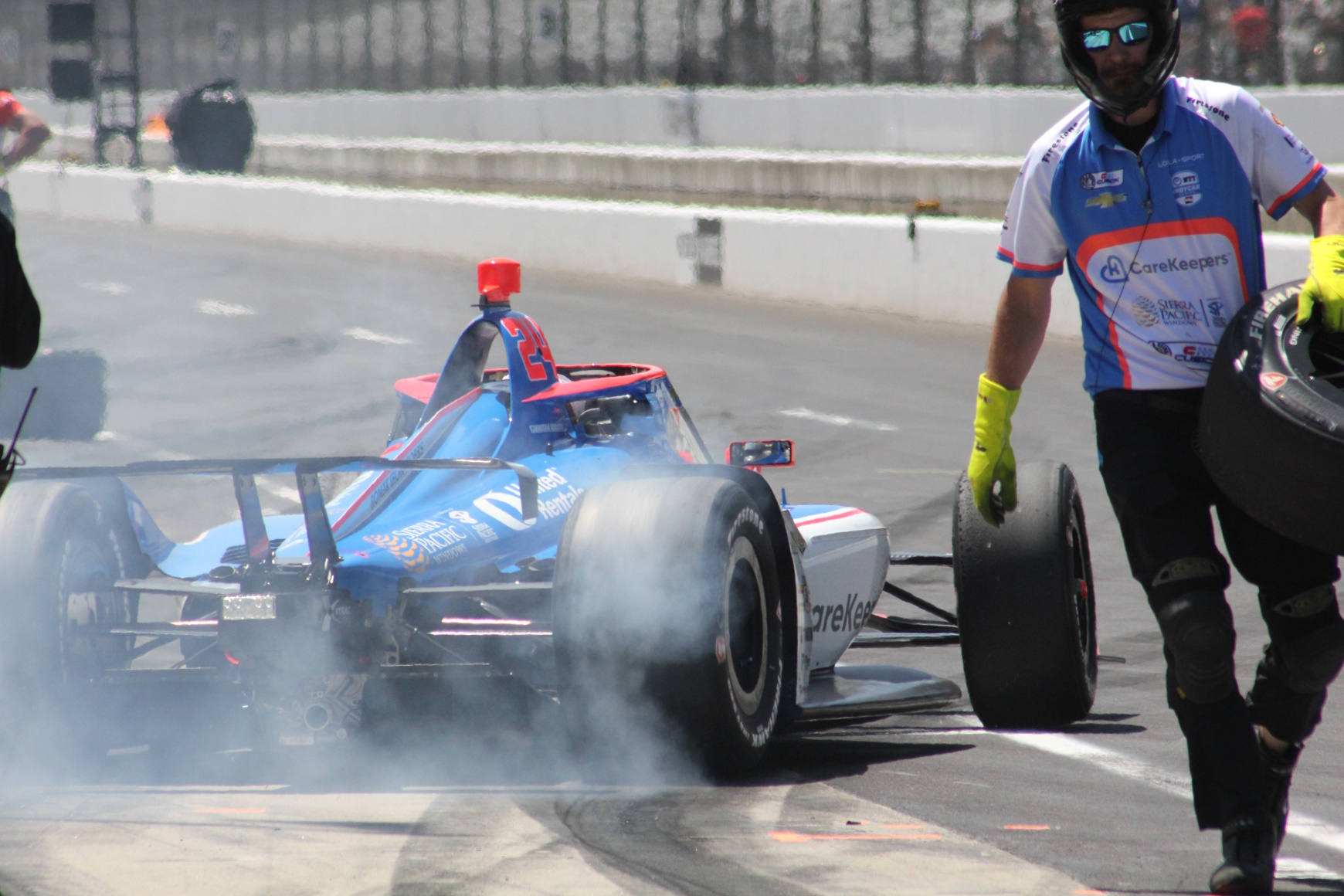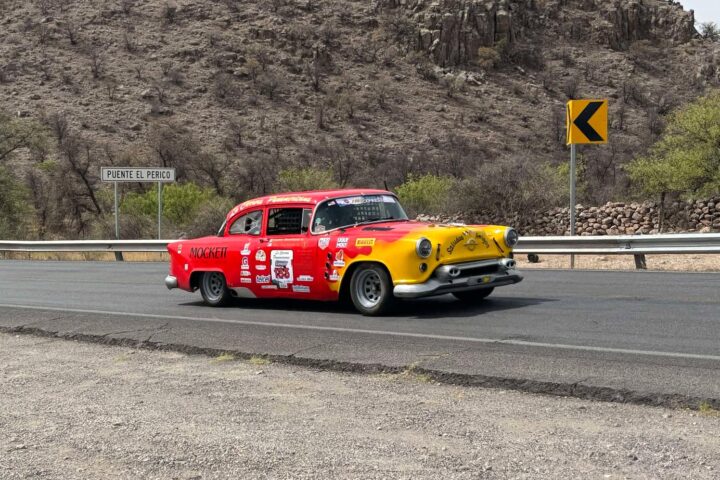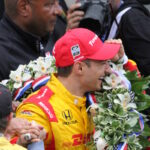by Chris Mulvihill – 05/29/2023
The front suspension is adjusted on 4-time Indy 500 winner Helio Castroneves’s Chevy-powered car during Thursday’s practice. Helio started 20th in the race and finished 15th.”
All 34 teams practiced Wednesday, Thursday, and Friday afternoons in anticipation of qualifying on Saturday. There is an excellent strategy in both qualifying and driving the actual Indy 500 race. Pit crews and team engineers work together to ‘set up’ the car’s suspension while factoring in the uncontrollable humidity, wind, air, track, and tire temperature (to name a few). Each team is allotted 34 sets (of 4) Firestone tires from the first day of practice to the end of race day. All tires are mounted, balanced, and dismounted by Firestone in their garage located in the Indianapolis Motor Speedway Paddock. Firestone has total control over all race tires which includes returning all used tires to their Akron, OH facility for research and recycling.
A Pennzoil Team tire technician burns a used front tire to expose the expansion strip. Measurements are taken before and after use to gauge tire wear.”
Stefan Ferrucci qualified 18th and powers his #24 car out of turn 3 early during Monday’s practice. Due to a crash later that day, Graham Rahal took his place starting from the 33rd position and finishing 22nd.
On Saturday, qualifying for positions 1-30 took place with 13-30 being set (these positions do not need to requalify on Sunday). Cars slower than the top 30 positions are considered to ‘not have a qualifying speed.’ Sunday qualifying determined positions 1-12 and 31-33. There was a special “Firestone Fast 6” which determined the starting positions of the first four rows. It was an exciting day with the pole position being captured by Honda-powered #10 ‘The American Legion’ car driven by Alex Palou and Graham Rahal (son of 1986 Indy 500 winner Bobby Rahal) was bumped from the field in the last minute of qualifying by the #30 car driven by Jack Harvey. As fate would have it, Graham Rahal was not out of the race for long. During general practice on Monday, May 22 Stefan Wilson was injured in a crash and Graham Rahal was asked to drive the Chevrolet powered #24 car in his place.
Team owner Chip Ganassi congratulates his driver Alex Palou on Sunday for clinching the pole position with a speed of 234.21MPH. The #10 Honda-powered car finished the race 4th .”
With the field of 33 cars set, Carb (Carburation) Day was held on Friday, May 26 which allowed the teams to run their cars on the track for 120 minutes. This is the last time a car may be on the track before the race. Some teams used this time to make last-minute changes to the cars while others choose not to run at all.
Graham Rahal’s crew practices pit stops on Carb Day.
During the 200-lap/500-mile race, each team had a minimum of 5 pit stops. Most stops involved tire changes and or adding fuel to the 18.5-gallon tank. On average, a set of tires will last between 30 to 40 laps.
Team Shell-Penske #2 Josef Newgarden passes Team Huski Ice Spritz #8 Marcus Erickson to clinch the win. Josef started the race in 17th position and Marcus last year’s Indy 500 winner-started 10th.
It is hard to believe all 33 cars ran over 229 miles an hour to qualify for a race position with the winner running 200 laps at an average speed of 168.1 MPH. The current Indy Car chassis has not changed in over 10 years and some say these speeds have pushed it to the limit. Many things draw people to this grand race and speed has to be #1. With over 300,000 people attending this year (second largest crowd in history), the Indy 500 continues to be the largest single-day sporting event in the world. If you have just a passing interest in racing I recommend attending if not the race, at least one day of practice. It is well worth the trip to this historic track for the racing experience as well as the excitement of the City during ‘Race Month.’

